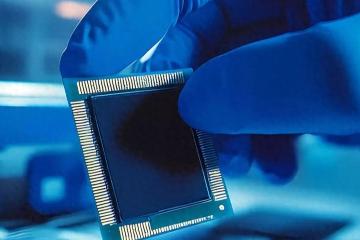In recent years, the semiconductor industry has been facing challenges stemming from geopolitical tensions and market uncertaintiesAs a result, many companies are re-evaluating their supply chain strategies and discovering new opportunities for growth, particularly within China's thriving economyMajor semiconductor manufacturers from Europe and the United States are increasingly recognizing the potential of the Chinese market, leading to a surge in investments and various strategic partnerships aimed at enhancing local production capabilities.
One notable factor driving this shift is the explosive growth of the electric vehicle (EV) market in China, which has become the largest worldwideChip manufacturers like Infineon Technologies, STMicroelectronics, and NXP Semiconductors are all vying for a larger share of the market as demand for EV-related components continues to rise
Advertisements
With the slowdown of Western electric vehicle markets, these companies are strategically refocusing their efforts on China, where the EV market remains robust.
Fabio Gualandris, president of STMicroelectronics, has emphasized that having a production presence in China is vital for capturing the rapidly expanding electric vehicle segmentLocal production and research and development (R&D) will enable faster responses to customer needs and lead to cost reduction, thereby providing manufacturers with a competitive edgeAs a result, Infineon has begun relocating parts of its production processes to foundries in China to meet the urgent demand for localized critical components from Chinese customers.
Historically, Infineon has had a manufacturing facility in Wuxi, China, operational since 1996, primarily focusing on back-end assembly and packaging
Advertisements
However, this report suggests that Infineon is actively considering outsourcing some of its front-end chip manufacturing to local foundries, given its lack of its own wafer fabrication facility in China.
The trend of strengthening partnerships with Chinese semiconductor companies is also prominently displayed in recent collaborationsOn November 21, STMicroelectronics announced a partnership with Huahong Semiconductor, China's second-largest foundry, to jointly produce 40nm microcontroller units (MCUs), with plans to commence production by the end of 2025. Moreover, last year, the company formed a joint venture with San'an Optoelectronics in China, focusing on the development, production, and sale of high-performance silicon carbide (SiC) power devices and diodes, with a total investment estimated at $3.2 billion.
NXP has likewise pronounced plans to enhance its manufacturing capabilities in China to establish a comprehensive domestic supply chain
Advertisements
The company, already running a packaging and testing facility in Tianjin, may also transfer some front-end chip manufacturing thereIn addition, the introduction of NXP's first fully online lab, the AIoT Innovation Center in China, further demonstrates its commitment to the Chinese market.
Examples of investment initiatives undertaken by Western semiconductor giants in China are numerous:
For STMicroelectronics:
- Creating a partnership with Huahong to manufacture 40nm MCUs.
- Establishing a joint venture with San'an Optoelectronics for front-end manufacturing of SiC devices, with an investment of approximately $32 billion.
- Expanding its packaging and testing facility in Shenzhen, where it collaborates with Huahong for the production of 40nm MCUs.
For NXP:
- Partnering with TSMC (Nanjing), SMIC, and Huahong to develop 16/28nm and 40nm technologies.
- Establishing a packaging and testing factory in Tianjin, which completes about 80% of its manufacturing internally.
- Launching an electrical applications laboratory in Tianjin to develop battery management ICs and advanced automotive applications.
For Infineon:
- Transferring a portion of its production to local foundries in China, with plans to further localize the supply of critical components.
- Forming supply partnerships with local SiC substrate providers to bolster its production capabilities.
Texas Instruments (TI) has also made significant moves, establishing production facilities in Chengdu that encompass wafer fabrication, assembly, and testing
- Han's M&A Faces Hurdles in Hong Kong
- 2024: A Milestone Year for AI
- Polysilicon Production Cuts to Impact PV Market
- Western Chip Firms Double Down on China
- Hong Kong Dividend Plays Offer Value
Its expansions reflect a long-term commitment to adapting to the growing demands of the Chinese semiconductor market.
Moreover, the global semiconductor landscape continues to evolve with firms like Micron, which plans to invest heavily in its Xi'an production base with ambitions of turning it into a sustainable and cutting-edge manufacturing center.
We see AMD partnering with Tongfu Microelectronics, allowing for shared benefits in packaging and testing operations critical to the demand for various semiconductor technologies.
Intel's significant investments are visible in enhanced testing and packaging facilities across its sites in Shanghai and Chengdu, addressing vital server chip production needs.
Qualcomm has taken proactive steps by launching an innovation center in Shenzhen, signifying a commitment to showcasing its leadership in wireless communication technologies and IoT applications.
The moves by these internationally recognized semiconductor companies underscore a broader trend of increasing integration and cooperation between Western and Chinese firms
